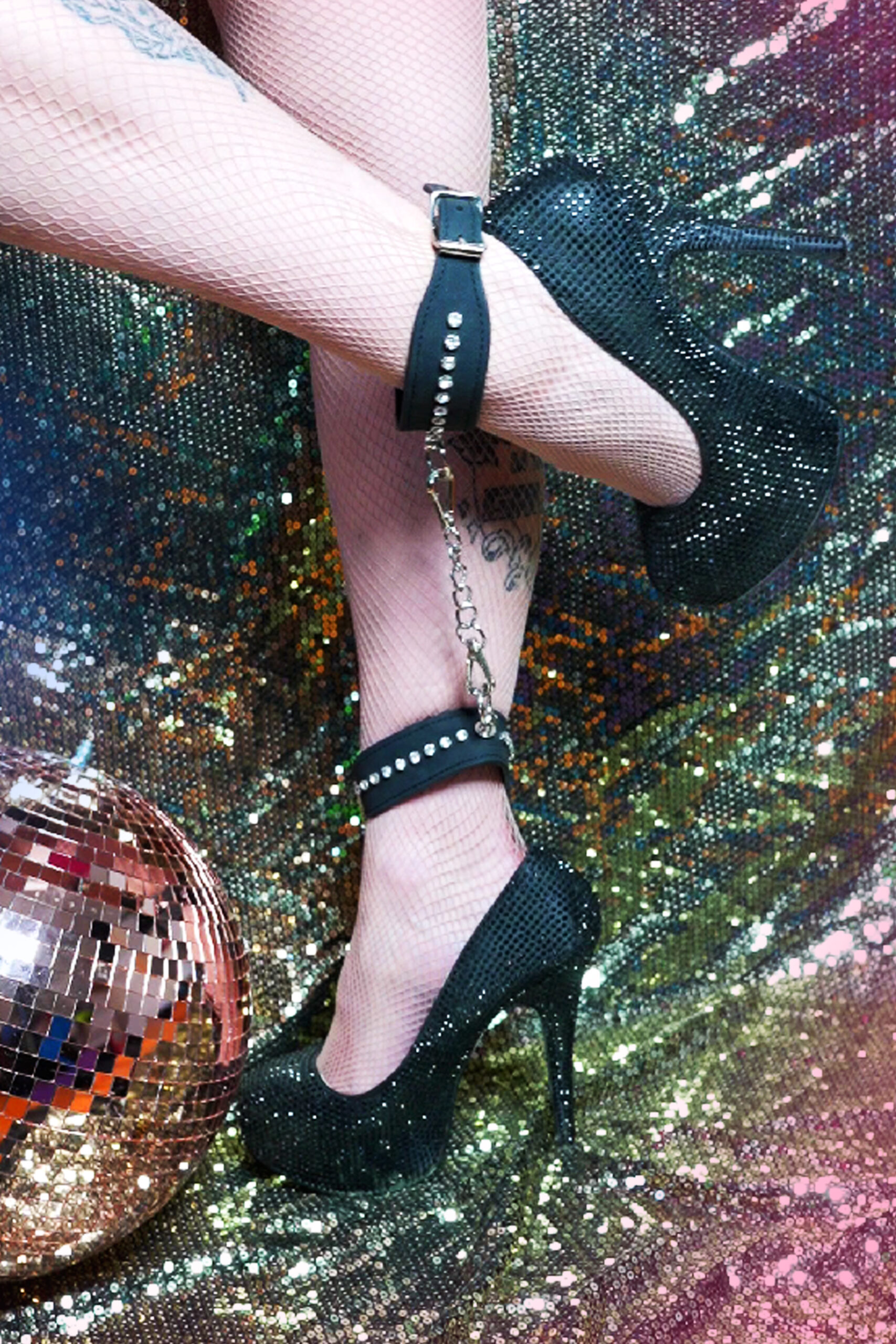Defining Skoliosexuality
Skoliosexuality is a relatively new term that describes attraction to individuals based on their physical stature or skeletal structure. It encompasses a diverse range of preferences, extending beyond traditional notions of beauty standards and emphasizing an appreciation for the unique qualities of different body types. Understanding skoliosexuality requires examining its nuances and exploring how it intersects with other sexual identities within the broader spectrum of human sexuality.
Understanding the Term
Skoliosexuality is a relatively new term used to describe attraction based on someone’s physical stature or skeletal structure. It emphasizes appreciating the unique qualities of different body types, moving beyond conventional beauty standards.
Someone who identifies as skoliosexual might find themselves drawn to individuals with specific bone structures, proportions, or physical attributes. This can encompass a wide range of preferences, from an attraction to tall and slender figures to a preference for muscular or athletic builds. It’s important to remember that skoliosexuality, like other sexual identities, is deeply personal and individual.
Key Characteristics and Traits
Skoliosexuality is a relatively new term used to describe attraction based on someone’s physical stature or skeletal structure. It emphasizes appreciating the unique qualities of different body types, moving beyond conventional beauty standards. Someone who identifies as skoliosexual might find themselves drawn to individuals with specific bone structures, proportions, or physical attributes. This can encompass a wide range of preferences, from an attraction to tall and slender figures to a preference for muscular or athletic builds.
It’s crucial to understand that skoliosexuality is not about fetishizing body parts but rather appreciating the overall aesthetic and structural uniqueness of different physiques. Individuals who identify as skoliosexual value the individuality and diversity in body shapes and sizes, finding attraction in the beauty of a wide spectrum of physical attributes.
Like all sexual identities, skoliosexuality is personal and diverse. It’s important to approach this topic with respect and understanding, recognizing that individuals experience attraction in unique and multifaceted ways.

Distinguishing Skoliosexuality from Other Sexual Identities
Skoliosexuality, a relatively new term within the spectrum of human sexuality, describes attraction based on an individual’s physical stature or skeletal structure. This identity moves beyond conventional notions of beauty standards by focusing on appreciating the unique qualities of diverse body types. Understanding skoliosexuality requires exploring its nuances and how it intersects with other sexual identities.
Comparison with Homosexuality and Bisexuality
Skoliosexuality, while sharing similarities with homosexuality and bisexuality in terms of being a sexual orientation based on attraction to others, has distinct differences. Homosexuality describes attraction to individuals of the same gender, while bisexuality encompasses attraction to two or more genders. Skoliosexuality, however, focuses specifically on physical stature or skeletal structure as the basis of attraction.
A key distinction is that skoliosexuality transcends gender. An individual can identify as skoliosexual regardless of their own gender identity or the gender of the person they are attracted to. Homosexuality and bisexuality inherently involve a consideration of gender, whereas skoliosexuality centers on physical attributes independent of gender.
Furthermore, skoliosexuality emphasizes an appreciation for diverse body types, moving beyond traditional beauty standards. It celebrates the unique aesthetic qualities of different physiques, while homosexuality and bisexuality are primarily defined by gender attraction.
Relationship to Asexuality and Pansexuality
Skoliosexuality intersects with asexuality and pansexuality in interesting ways. While skoliosexuality centers on physical stature as the primary basis for attraction, asexuality describes a lack of sexual attraction to any gender. Someone who identifies as both asexual and skoliosexual might experience emotional or romantic connections without experiencing sexual desire based on physique.
Pansexuality, on the other hand, involves attraction to individuals regardless of their gender identity. An individual can be pansexual and also identify as skoliosexual, finding themselves attracted to people across the gender spectrum whose physical stature or skeletal structure resonates with them.
Exploring the Nuances of Attraction
Skoliosexuality is a relatively new term that describes attraction based on an individual’s physical stature or skeletal structure. It emphasizes appreciating the unique qualities of diverse body types, moving beyond conventional beauty standards. Someone who identifies as skoliosexual might find themselves drawn to individuals with specific bone structures, proportions, or physical attributes. This can encompass a wide range of preferences, from an attraction to tall and slender figures to a preference for muscular or athletic builds.
Understanding skoliosexuality requires examining its nuances and how it intersects with other sexual identities within the broader spectrum of human sexuality. Skoliosexuality is not about fetishizing body parts but rather appreciating the overall aesthetic and structural uniqueness of different physiques. Individuals who identify as skoliosexual value the individuality and diversity in body shapes and sizes, finding attraction in the beauty of a wide spectrum of physical attributes.
Like all sexual identities, skoliosexuality is personal and diverse. It’s important to approach this topic with respect and understanding, recognizing that individuals experience attraction in unique and multifaceted ways.
Skoliosexuality, while sharing similarities with homosexuality and bisexuality in terms of being a sexual orientation based on attraction to others, has distinct differences. Homosexuality describes attraction to individuals of the same gender, while bisexuality encompasses attraction to two or more genders. Skoliosexuality, however, focuses specifically on physical stature or skeletal structure as the basis of attraction.
A key distinction is that skoliosexuality transcends gender. An individual can identify as skoliosexual regardless of their own gender identity or the gender of the person they are attracted to. Homosexuality and bisexuality inherently involve a consideration of gender, whereas skoliosexuality centers on physical attributes independent of gender.
Furthermore, skoliosexuality emphasizes an appreciation for diverse body types, moving beyond traditional beauty standards. It celebrates the unique aesthetic qualities of different physiques, while homosexuality and bisexuality are primarily defined by gender attraction.
Skoliosexuality intersects with asexuality and pansexuality in interesting ways. While skoliosexuality centers on physical stature as the primary basis for attraction, asexuality describes a lack of sexual attraction to any gender. Someone who identifies as both asexual and skoliosexual might experience emotional or romantic connections without experiencing sexual desire based on physique.
Pansexuality, on the other hand, involves attraction to individuals regardless of their gender identity. An individual can be pansexual and also identify as skoliosexual, finding themselves attracted to people across the gender spectrum whose physical stature or skeletal structure resonates with them.
Social and Cultural Context of Skoliosexuality
Skoliosexuality, a relatively new term within the spectrum of human sexuality, describes attraction based on an individual’s physical stature or skeletal structure. Understanding skoliosexuality requires examining its nuances and how it intersects with other sexual identities.
Representation in Media and Popular Culture
Skoliosexuality is a relatively new term used to describe attraction based on someone’s physical stature or skeletal structure. It emphasizes appreciating the unique qualities of different body types, moving beyond conventional beauty standards. Someone who identifies as skoliosexual might find themselves drawn to individuals with specific bone structures, proportions, or physical attributes. This can encompass a wide range of preferences, from an attraction to tall and slender figures to a preference for muscular or athletic builds.
It’s crucial to understand that skoliosexuality is not about fetishizing body parts but rather appreciating the overall aesthetic and structural uniqueness of different physiques. Individuals who identify as skoliosexual value the individuality and diversity in body shapes and sizes, finding attraction in the beauty of a wide spectrum of physical attributes.
Representation of skoliosexuality in media and popular culture is still nascent. It’s often portrayed stereotypically or relegated to niche communities online. This lack of visibility can contribute to feelings of isolation and invisibility among those who identify as skoliosexual.
Increased representation is crucial for fostering understanding and acceptance of this identity. Depicting diverse skoliosexual characters in a nuanced and respectful manner can help challenge societal norms and promote inclusivity within media narratives.
Challenges and Discrimination Faced by Individuals Identifying as Skoliosexual
Skoliosexuality, while gaining more visibility, still faces challenges and discrimination due to its unique nature and lack of widespread understanding.
One significant challenge is the stigma associated with atypical attractions. Skoliosexuality, by focusing on physical stature rather than traditionally recognized characteristics like gender or personality, can be met with misunderstanding and prejudice. Some individuals may view it as fetishization or objectification, failing to grasp its deeper appreciation for body diversity.
The lack of representation in mainstream media further contributes to these challenges. The absence of skoliosexual characters in films, television shows, and literature reinforces societal norms that prioritize conventional beauty standards and limit the understanding of diverse sexualities.
This limited representation can lead to feelings of isolation and invisibility for individuals who identify as skoliosexual. They may struggle to find community or support systems, leading to emotional distress and difficulty navigating their identities.
Discrimination can manifest in various forms, ranging from subtle microaggressions to outright hostility. Skoliosexual individuals may face rejection from friends, family, or romantic partners who cannot accept their attraction.
They might also encounter discrimination in professional settings or be denied access to certain services or opportunities based on their sexual orientation.
Addressing these challenges requires a multifaceted approach that involves education, advocacy, and increased representation.
Promoting open and honest conversations about sexual diversity can help break down stigma and foster empathy. Encouraging diverse storytelling in media and promoting inclusive policies in various sectors can create a more accepting environment for skoliosexual individuals to thrive.
Advocacy and Support Networks

Skoliosexuality, a relatively new term describing attraction based on an individual’s physical stature or skeletal structure, is still navigating its place within the broader spectrum of human sexuality. While gaining visibility, it faces challenges due to societal stigma and lack of understanding.
Advocacy and support networks are crucial for fostering acceptance and creating a more inclusive environment for skoliosexual individuals. These networks provide safe spaces for individuals to connect with others who share similar experiences, offering emotional support, guidance, and resources. Online forums, social media groups, and local organizations dedicated to LGBTQ+ issues often have spaces specifically for skoliosexual individuals or those exploring their identities.
These platforms allow people to share their experiences, find community, and access information about navigating societal challenges related to skoliosexuality.
Increased representation in media and popular culture is essential for breaking down stigma and promoting understanding of skoliosexuality.
Visibility can help challenge societal norms surrounding beauty standards and sexual diversity, making it easier for individuals to feel seen and accepted for who they are.
Education is another crucial element in creating a more inclusive society.
Providing accurate information about skoliosexuality and addressing common misconceptions can help dispel fear and prejudice. Educational resources can be found online, through LGBTQ+ organizations, and within academic institutions.
Further Exploration and Resources
For further exploration of skoliosexuality and its intersections with other sexual identities, consider delving into the following resources:
Online communities and forums dedicated to LGBTQ+ individuals, especially those focused on body positivity and diverse sexualities, can offer valuable insights and support.
Academic journals and articles exploring queer theory, sexuality studies, and body image can provide in-depth analyses of skoliosexuality within a broader social context.
Websites and publications from LGBTQ+ advocacy organizations often feature articles, interviews, and personal narratives that shed light on the experiences of skoliosexual individuals.
Remember to approach these resources with respect and sensitivity, recognizing that individual experiences with skoliosexuality can vary widely.
Reliable Sources for Information
For further exploration of skoliosexuality and related topics, consider these resources:
Online communities and forums dedicated to LGBTQ+ individuals, particularly those focused on body positivity and diverse sexualities, can offer valuable insights and support.
Academic journals and articles exploring queer theory, sexuality studies, and body image can provide in-depth analyses of skoliosexuality within a broader social context.
Websites and publications from LGBTQ+ advocacy organizations often feature articles, interviews, and personal narratives that shed light on the experiences of skoliosexual individuals.
Remember to approach these resources with respect and sensitivity, recognizing that individual experiences with skoliosexuality can vary widely.
Organizations Supporting Skoliosexual Individuals
For those seeking further understanding or support related to skoliosexuality, several resources are available:
Online communities and forums dedicated to LGBTQ+ individuals often have spaces for discussing diverse sexualities, including skoliosexuality. These platforms can provide a sense of community and offer opportunities to connect with others who share similar experiences.
LGBTQ+ advocacy organizations such as The Trevor Project, GLAAD, and Human Rights Campaign provide information, support services, and resources related to various sexual orientations, including skoliosexuality.
Academic journals and articles on queer theory, sexuality studies, and body image can offer in-depth analyses of skoliosexuality within a broader social context. University libraries and online databases are valuable sources for accessing these scholarly works.
dp dildo
Alkhemist LA
Dior Auction
- Alluzience Longer Lasting Botox Near Haslemere, Surrey - September 3, 2025
- Will People Notice If I Get Fillers? - June 24, 2025
- What Is The Cost Of Jowl Treatment In Kingston Upon Thames And Surrey - June 21, 2025




